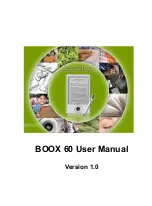
Chapter
2
Operating Instructions
CLV 480 Bar Code Scanner
2-4
©
SICK AG · Division Auto Ident · Germany · All rights reserved
8 010 080/O824/10-02-2005
Safety information
2.4
Quick stop and quick restart
2.4.1
Stopping the CLV
¾
Switch off the power supply or remove the cables of the CLV from the connection
module.
This can result in loss of the following (at the most):
•
The application-specific parameter set, if it was stored
temporarily
in the CLV
•
The last reading result
•
Daily operating data
(operating hours counter, number of reading triggers, number of Good Reads, number
of No Reads, maximum duration trigger, minimum duration trigger, number of matches
with match code 1, number of matches with match code 2, numbers of No Matches)
2.4.2
Restarting the CLV
¾
Switch on the power supply or reattach the cables of the CLV to the connection
module.
The CLV resumes operation with the parameter set that was
last stored permanently
and reset the daily operating data.
2.5
Environmental information
The CLV is designed to cause minimum impact on the environment. It does not contain any
silicone-based materials on the housing surface and, therefore, does not represent any pro-
blems for paint sprayers in paint shops, for example.
2.5.1
Power requirements
The power requirements depend on the variants:
•
The line scanner has a typical power consumption of 11 W and max. 16 W
•
The line scanner with oscillating mirror has a typical power consumption of 13 W and
max. 18 W
•
The line scanner equipped with an integrated heater has a typical power consumption
of 75 W and max. 90 W
•
The line scanner with oscillating mirror equipped with an integrated heater has a typical
power consumption of 75 W and max. 100 W
The values are given for devices with disconnected switching outputs.
2.5.2
Disposal after removal from service
Always dispose irreparable devices in a manner that is not harmful to the environment and
in accordance with the applicable national waste disposal regulations. The CLV can be se-
parated into recyclable secondary raw materials and special-category waste (electronic
scrap).
See also
Chapter 7.3 Disposal, Page 7-2
SICK AG currently does not accept delivery of unusable or irreparable devices.
















































